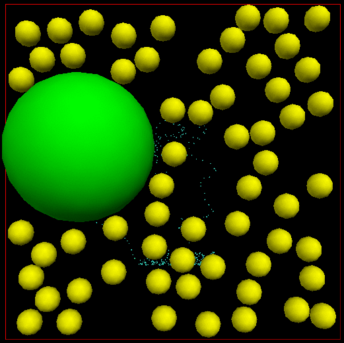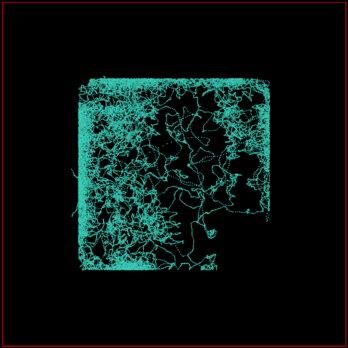|Back to 'My Vision Teaching of Computational Physics|
Further thoughts on the choice of languages
Languages
Overall aims and principles
I think it's reasonable to aim for every student to
be fluent in one programming language and
familiar with at least one other, so they are confident that
they can pick up any language in the future.
Students should also be happy making different programs work with
each other - for example, writing programs that write results to
text files that are then plotted with another package.
If we intend to promote group work on computer projects,
we will have to choose one main recommended language at that point.
If possible, all the software tools used should be free, so that
students can put them on their own computers without cost.
We should introduce students to at least one
language that prospective employers
view as an asset. (eg C, C++, java, python(?))
Languages that can be run interactively are great for
beginners.
We should introduce students to a programming language that we can imagine
they will use as a matter of course to help their learning during
their 2nd, 3rd, and 4th years.
At some point, we should introduce ideas of good programming style.
-
If possible,
we should encourage debugging with the aid of a quality debugger.
Visualizing a running program in a debugger can be
an excellent way to help people understand what's going
on when their program runs.
-
Testing
-
The benefits of structured programming
I think it would be good to introduce
both Object-oriented programming
as well as imperative programming.
python is an attractive options
since it can be used in either style.
Options
I am not religious about languages.
I have taught C, octave, and python,
and would be happy with all of these.
I would also be happy to learn to teach C++
or java.
C and C++ are industry standards;
there are good debuggers for them; C is a stable
and simple language.
Down-sides of C: it's perhaps too low-level;
and it has no interactive mode.
Down-side of C++: it doesn't work with my favourite free interactive
debugger, ups.
octave is very accessible to a novice.
It does not lend itself to high quality structured programming however,
nor object-oriented programming.

Python
python comes with many packages that provide
powerful functions such as rendering.
Python comes with numerical libraries, and it can interface
seamlessly with software written in other languages.
It's very easy to make good-looking demonstrations that
are extremely educational.
For example, what happens if one mixes large spheres
and small spheres in a box of small volume? (There are
no potentials at all, except infinite potentials
preventing overlap of spheres.)
It was easy to write a 186-line program yielding
the accompanying screenshots.
 Statistical physics predicts that at equilibrium all energies
should be Boltzmann-distributed, independent of particle locations,
and that all valid locations are equiprobable.
The consequences of this uniform distribution
over state space are profound: the marginal
distribution of the location of the one big sphere is highly
non-uniform, for example. The second figure shows where the
centre of mass went during half an hour's simulation. The big sphere
is very likely to be close to the wall because such locations
increase the entropy of the little guys.
The same simulation also gives deep insight into fluctuation-dissipation
phenomena.
Statistical physics predicts that at equilibrium all energies
should be Boltzmann-distributed, independent of particle locations,
and that all valid locations are equiprobable.
The consequences of this uniform distribution
over state space are profound: the marginal
distribution of the location of the one big sphere is highly
non-uniform, for example. The second figure shows where the
centre of mass went during half an hour's simulation. The big sphere
is very likely to be close to the wall because such locations
increase the entropy of the little guys.
The same simulation also gives deep insight into fluctuation-dissipation
phenomena.
Computer algebra systems
I think we should introduce students to the idea that
occasionally computers can help by solving algebra for us.
I wouldn't make this a high priority, since I would guess
that computer algebra is used by only a small minority in the Cavendish.
Maple and Mathematica are both good, but are not free.
Maxima is free.
Maxima manual.
For an example of a tiny example solved in
Maple and Maxima, see this page.
David MacKay
Last modified: Mon Aug 20 09:45:35 2007
 Statistical physics predicts that at equilibrium all energies
should be Boltzmann-distributed, independent of particle locations,
and that all valid locations are equiprobable.
The consequences of this uniform distribution
over state space are profound: the marginal
distribution of the location of the one big sphere is highly
non-uniform, for example. The second figure shows where the
centre of mass went during half an hour's simulation. The big sphere
is very likely to be close to the wall because such locations
increase the entropy of the little guys.
The same simulation also gives deep insight into fluctuation-dissipation
phenomena.
Statistical physics predicts that at equilibrium all energies
should be Boltzmann-distributed, independent of particle locations,
and that all valid locations are equiprobable.
The consequences of this uniform distribution
over state space are profound: the marginal
distribution of the location of the one big sphere is highly
non-uniform, for example. The second figure shows where the
centre of mass went during half an hour's simulation. The big sphere
is very likely to be close to the wall because such locations
increase the entropy of the little guys.
The same simulation also gives deep insight into fluctuation-dissipation
phenomena.
